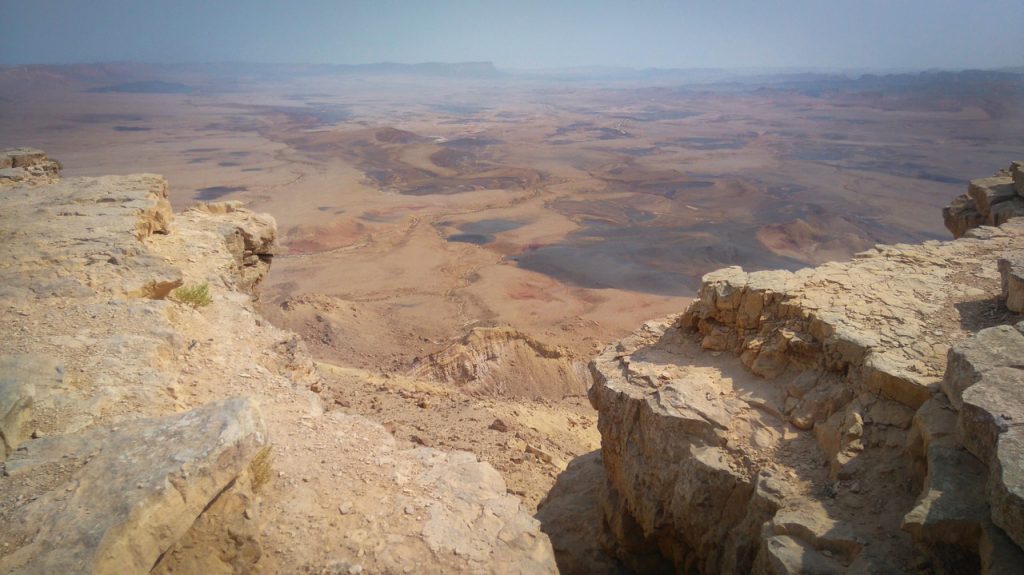Jericho is among the world’s oldest cities, and the first city conquered as referenced in the Old Testament. [1] As written in the book of Joshua (Joshua 6:1-27), the city was destroyed by fire with the slaughter of all its inhabitants. Jericho is referred to as the city of palm trees [2], and its place name means “moon.” [3] In Genesis 13:10, the plains of Jericho within the south Jordan River valley are characterized as a well-watered garden. [4]
Old Testament Jericho
The site of OT Jericho is largely today subdued by erosion. Through exposure to wind and rain over the years, its location is pitted and marred by abrasion and environmental wear. While the surface area of OT Jericho is worn at its exterior due to stresses, substantial historical records were buried for discovery to reveal details about the city’s construction and layout. Specifically, records pertaining to burn sites, pottery, dwellings, and wall construction.
Two key areas of interest with OT Jericho pertain to its destruction and the account of Joshua’s scouts involving Rahab, a Canaanite prostitute resident of Jericho. With extensive archaeological research, to verify these biblical accounts’ historical validity, Jericho’s historical background is buried beneath modern-day Tel es-Sultan. Whereas the specifics about timing and method of destruction are well documented and made public by John Garstang (1930-1936), Bryant G. Wood (1990), and others.
The biblical account of Jericho’s felled wall is clearly articulated in Joshua 6:20. To validate the biblical record, historical and archaeological evidence was collected and analyzed to recognize the ceramic type in that biblical era along with the erosion and fire damage that ceramic evidence underwent.
Long after the city was burned in a fire by Joshua’s men, there were jug containers excavated from within the city. Those jugs contained grain with further archaeological evidence of fire damage. With Garstang’s discovery of fallen mud bricks from inside the city and the presence of scorched surfaces throughout the area, the biblical account’s historicity was verified. Decades later, Bryant Wood’s successful refutation of radiocarbon-14 dating of burned grain found within the containers at Jericho resolves questions, doubt, and controversy about the timeline of the attack in the historical record. [5] The inside-outward fallen brick wall of Jericho is not just a legend, but a historical fact proven by archaeological evidence across various research studies. [6]
It appears that the capstone message associated with OT Jericho is the curse that is proclaimed upon it by Joshua. Specifically, that the one who again builds or fortifies Jericho shall experience the loss of his offspring. As thereafter confirmed and fulfilled in scripture (1 Kings 16:34), Hiel of Bethel, in his defiance, loses all his children while building Jericho several hundred years after its destruction. The subsequent curse that fell upon him revealed the oath proclaimed by Joshua and the Israelites before the LORD (Joshua 6:26).
New Testament Jericho
A separate nearby Jericho site sometimes referred to as Herodian Jericho, underwent further development with palaces, complex buildings, swimming pools, a hippodrome, a theater, and possibly a gymnasium. The area supported numerous residential dwellings during the second temple period. [7] Well, after the events of OT Jericho, further biblical narratives are recorded with miracles performed by Jesus while He spent time traveling there during His ministry. [8]
While numerous New Testament Jericho locations remain in place, modern construction and dwellings prevent research or archaeological excavations.
Modern Jericho
From post-biblical Jericho through the Crusader era up to about the 1940s, Jericho was a village of less development and notoriety. Undeveloped through hundreds of years whereas at the turn of the 20th century it was sparsely populated with mud huts. A sort of Holy Land ghetto as described by Dr. Olin who says it was the “meanest and foulest of Palestine.” [9]
In contrast to earlier decades of mud huts, today the city is rich in produce as supported by a powerful spring in the area. Jericho is on the West Bank of the Jordan river within Israel and it is populated with Palestinian peoples and a few Jewish settlements at its outskirts. The area is 80-85% Sunni Muslim [10] occupied while the city is widely irrigated for agricultural purposes. There are significant trade and tourism in the area to support Holy Land visitors from among many nations throughout the globe.
Citations
[1] Collins Thesaurus of the Bible, A. Colin Day, Region, M Place Names Beginning J, M3a Jericho, the Place, 184
[2] Deuteronomy 34:3
[3] Holman Illustrated Bible Dictionary, Jericho
[4] The Holman Christian Standard Bible, Genesis 13:10 annotated
[5] “Digging up Jericho”, Kathleen M., Kenyon (1952-1958) London: Ernest Benn, 1957
[6] Carbon 14 Dating at Jericho, Bryant G. Wood, Ph.D., “Conquest of Canaan”, 08/07/2008
https://biblearchaeology.org/research/conquest-of-canaan/4051-carbon-14-dating-at-jericho
[7] Netzer, Ehud, “Jericho, Tulul Abu El-‘Alayiq, Excavation Until 1951.” New Encyclopedia of Archaeological Excavations in the Holy Land 2 (1993): 682–83
[8] Matthew 20:29, Mark 10:46, Luke 10:30-37, Luke 18:35, Luke 19:1
[9] Smith’s Bible Dictionary, Jericho, https://biblehub.com/topical/j/jericho.htm
[10] CIA World Factbook, West Bank, Jericho.
https://www.cia.gov/library/publications/resources/the-world-factbook/geos/we.html
















Comments are closed.